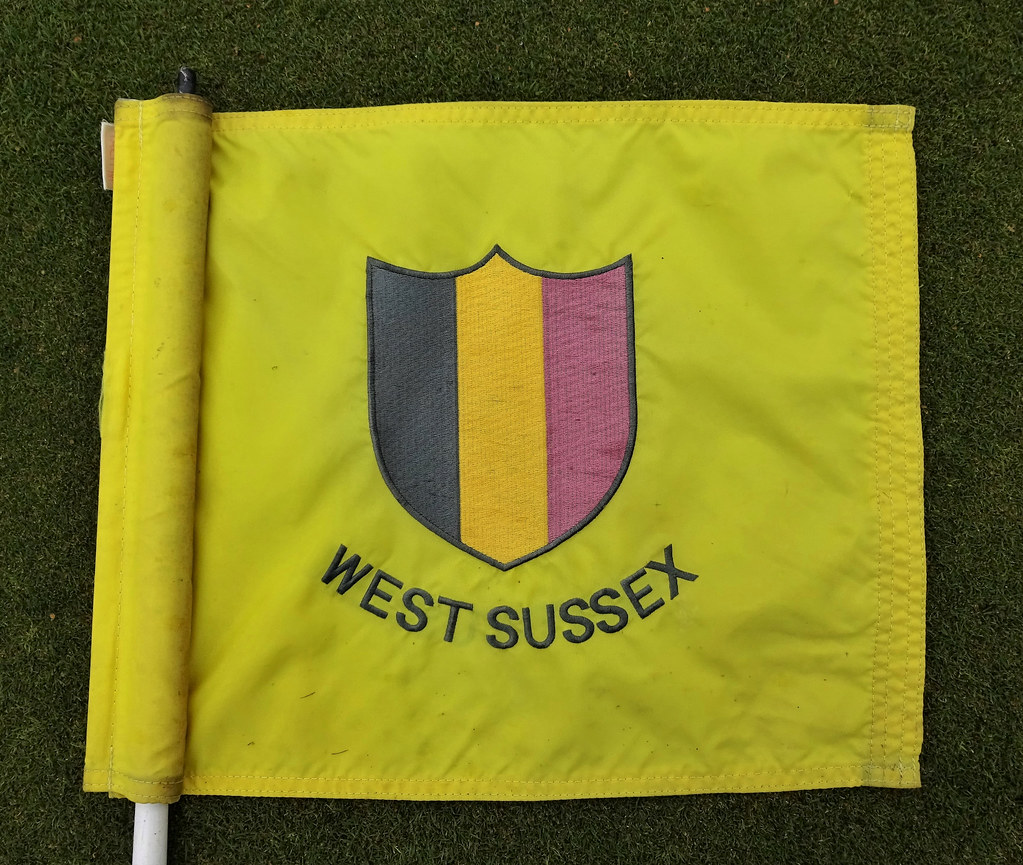
Much like Sandy Lodge in faraway Hertfordshire, Pulborough is set in an unlikely sandy golfing oasis surrounded by clay soils. There is a sense of anticipation when making the turn off the A283. However, we must cross a small bridge over a low lying wet area which causes some trepidation. The reasons for such alarm are quickly abated when the opening hole is revealed after rounding the clubhouse. It is an august scene of pines, heather and white sand. I imagine most folks had the same sense of arrival as did I, yet the opener is arguably Pulborough’s least interesting hole!
A relative late comer to the golfing scene, Pulborough has yet to celebrate its centenary. It is, however, difficult to determine who designed the course as attribution is given to Ferigna Incorporated; a partnership of GC Campbell, SV Hotchkin and CK Hutchison. Links & Courses, a partnership of Campbell & Hutchison, is also given credit (with Hutchison given top billing). After grow in issues the En Tout Cas (another company involving Hutchison and Campbell) finished the project in 1931. Finally, the would be club founder, one Commander Hillyard, also had a strong hand in the eventual realization of the course and club. It is thought Hillyard amended and built more bunkers, moved a few greens and shortend a few holes. Perhaps most importantly, Hillyard shortened the 6th to a 240 yard hole which offered the golfer the option to play over or around the marsh. To complicate matters more, it is suspected that Hillyard may have taken advice from Tom Simpson. Whatever the case may be, Hotchkin and Hutchison were thoroughly experienced in the arts of golf design, construction and maintenance when the commission for Pulborough was settled. It can sometimes be difficult to discern if the work of these three was the result of a partnership or individual efforts. Suffice it to say, many prominent and influential courses were touched by the hand of Campbell, Hotchkin and Hutchison. Examples include Ashridge, Kington, Brancaster, North Berwick, Woodhall Spa, Princes, Humewood, Royal Ashdown Forest, Carnoustie and Gleneagles (Kings and Queens). Sadly, it would seem there were differences of opinion while working on West Sussex which ended the short-lived partnership.
After serving in the Leicestershire Yeomanry during WWI, Hotchkin purchased Woodhall Spa in 1920 and with the help of Hutchison dug into a complete redesign of Colt's work. After a famous trip to South Africa to work on several courses which included Durban and Humewood, Hotchkin returned to England in 1928 and recruited Campbell and Hutchison to Ferigna.
After a very good amateur career which was stunted by WWI, Hutchison gained experience working with J Braid in building Gleneagles prior to assisting at Woodhall Spa.
Campbell was a family friend of the Hotchkin who was a correspondent and served as sub-editor under Bernard Darwin at the London Times. One might have thought Campbell would suffer from the company breakup. This wasn't the case at all for he was in high demand and worked on many courses which include Trevose, Rye, Royal Dublin, North Berwick, Deal, Princes and Haagsche...to name a few. Interestingly, Campbell seems to have had a change of heart where bunkers are concerned. There can be little doubt that the bunkers scheme at West Sussex provides the major man-made challenge, but in a March 1954 Golf Monthly article Campbell advocated for reducing the use of bunkers. Both JS Morrison and Tom Simpson later wrote articles along the same lines as Campbell suggested.
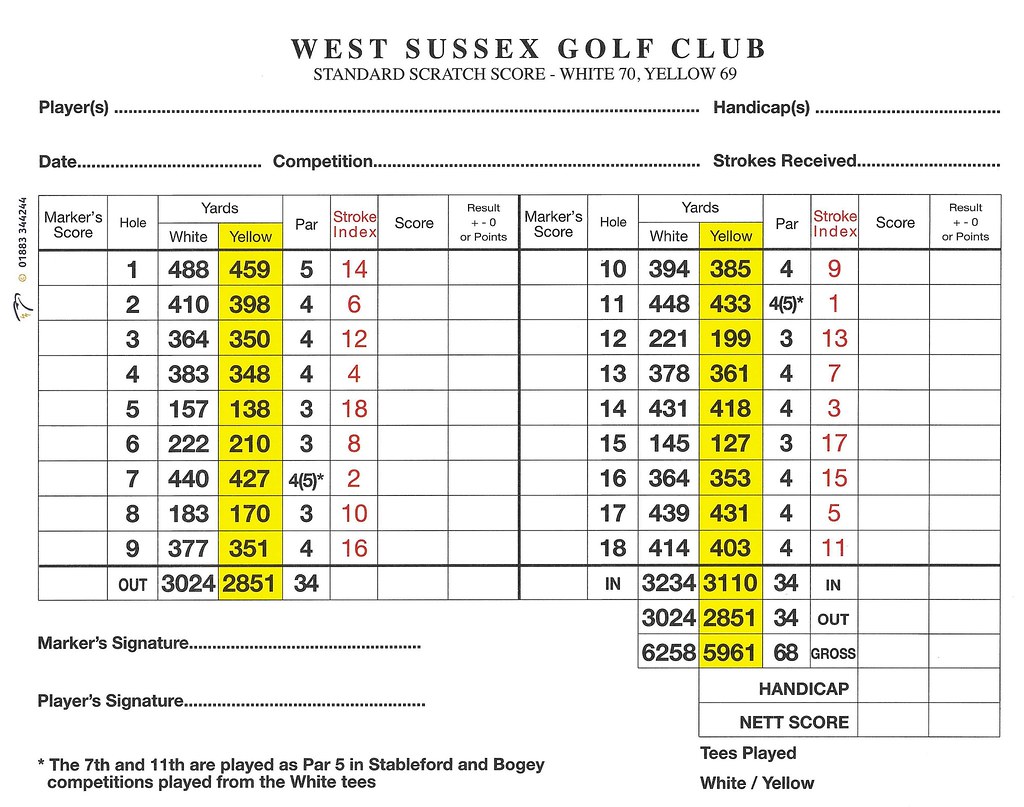
The scorecard can sometimes be mentioned, but in this case it would be remiss not to cover old ground. Par is a miserly 68 against a yardage of 5961 (in praise of yellow tees). There is one par 5 and five par 3s. Among the twelve par 4s are five holes which measure more than 400 yards. Two of the short holes hover around the 200 yard mark. What does all this information mean? Well, Pulborough is no easy task. For most golfers there will be plenty of wood play.
In some ways, the club has given the golfer a break on the opener. The tee is set by the side of the house. Should that tee be moved forward to the front of the house (where the forward tees are) then another long par 4 is the result. On balance, I would rather see one tee for all, right in front of the house windows for there can be no better way to start a round of golf. As mentioned previously, the 1st isn't a hole to commit to memory, but it does set the scene.
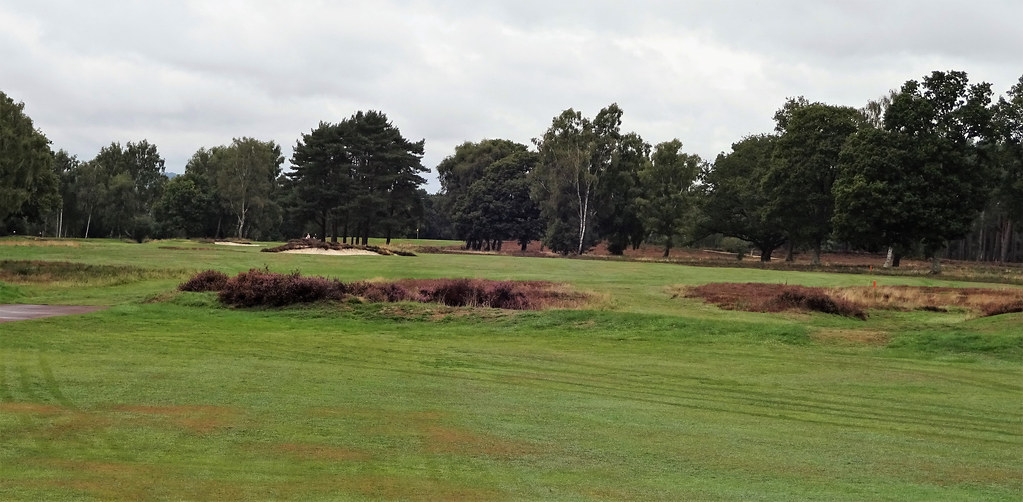
Sometime after WWII, the second's yardage was reduced. There used to be a tee back left, calling for a legger left. With the course boundary hard left, it may be wise to play a bit further right than one might ideally wish on the second. The approach is blind in that a rather large carry can't be seen.
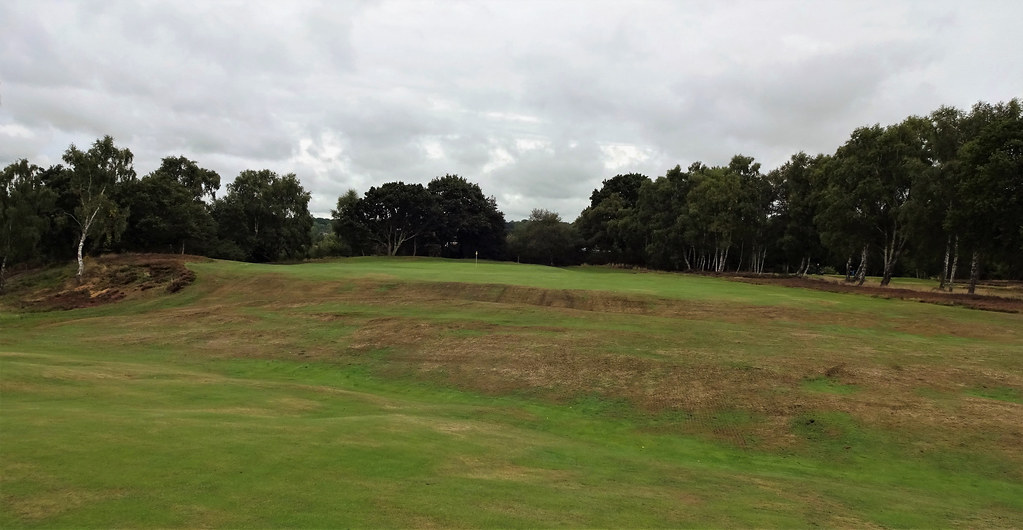
One of the few holes where big hitters have an obvious advantage, the third is a narrow, modest length two-shotter.
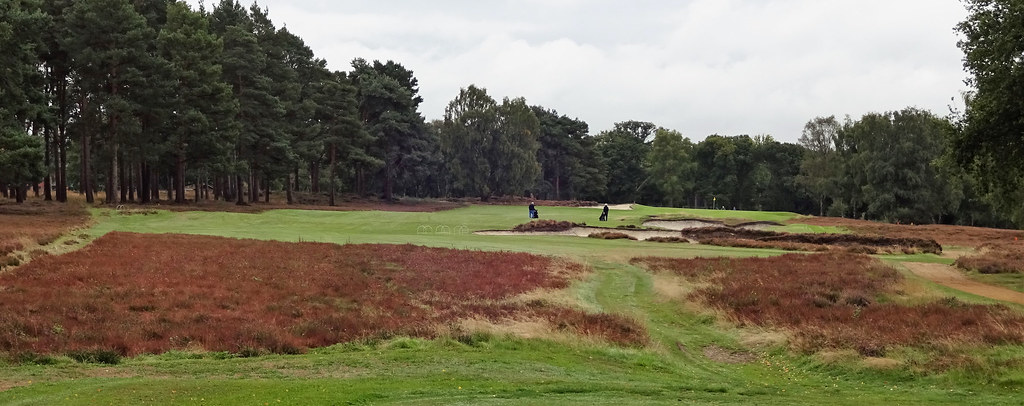
This last bunker is difficult to see from the tee and might catch many a golfer out....or worse, the shoulder will kick balls right.

Pulborough comes into its own on the 4th. The hole legs left around a bunker and fierce heather.
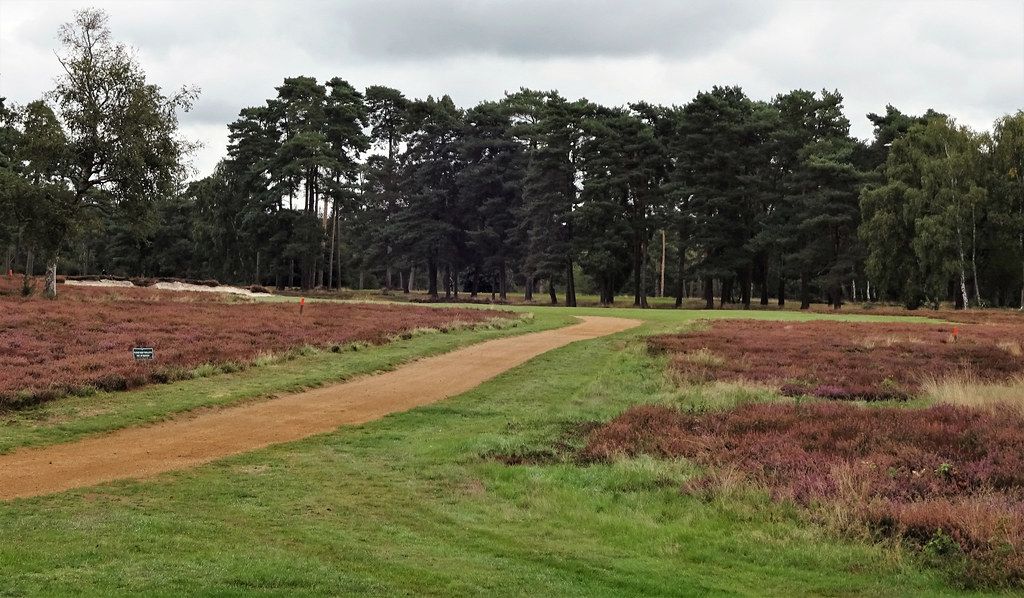
The slightly uphill approach is to a green which slips away from play is none too easy either.
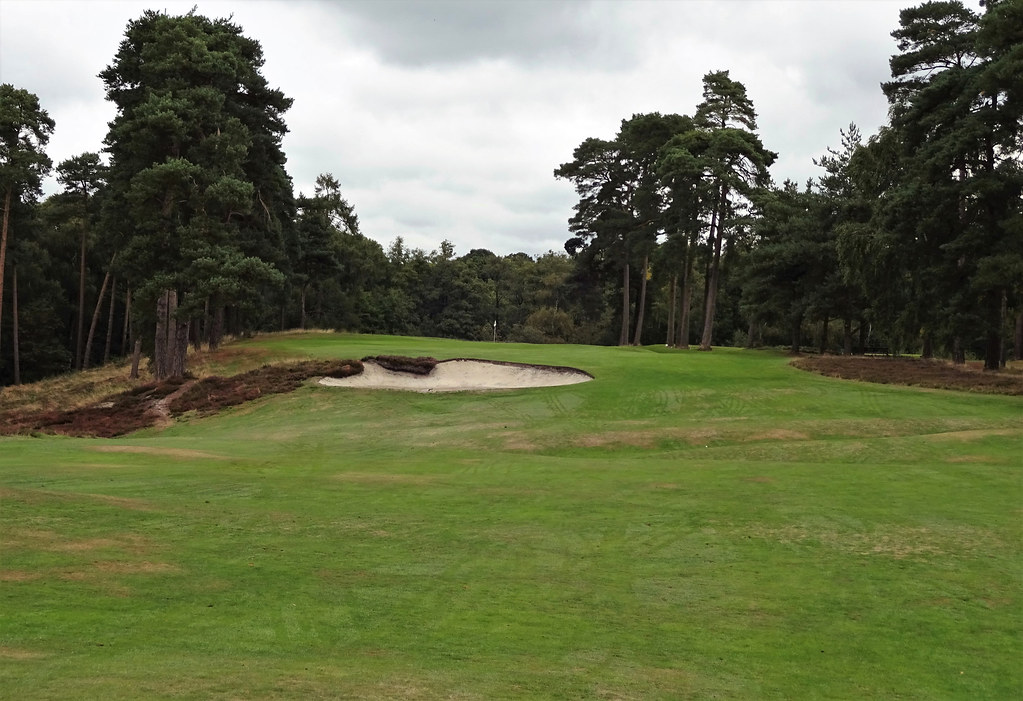
The short holes are now in abundance with five in the next eleven holes. The shortish 5th is a beauty, as are all Pulborough's par 3s. It is on holes such as this that trees really make their mark because of blocked views toward Chanctonbury Ring on the summit of the South Downs.
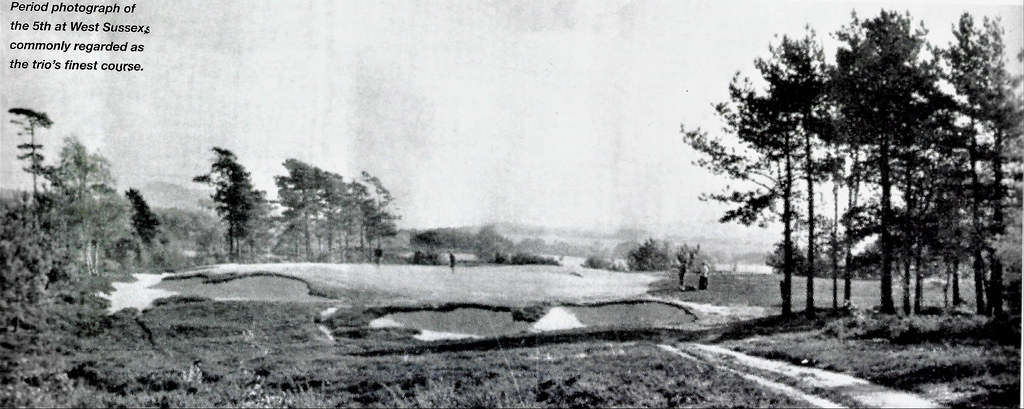

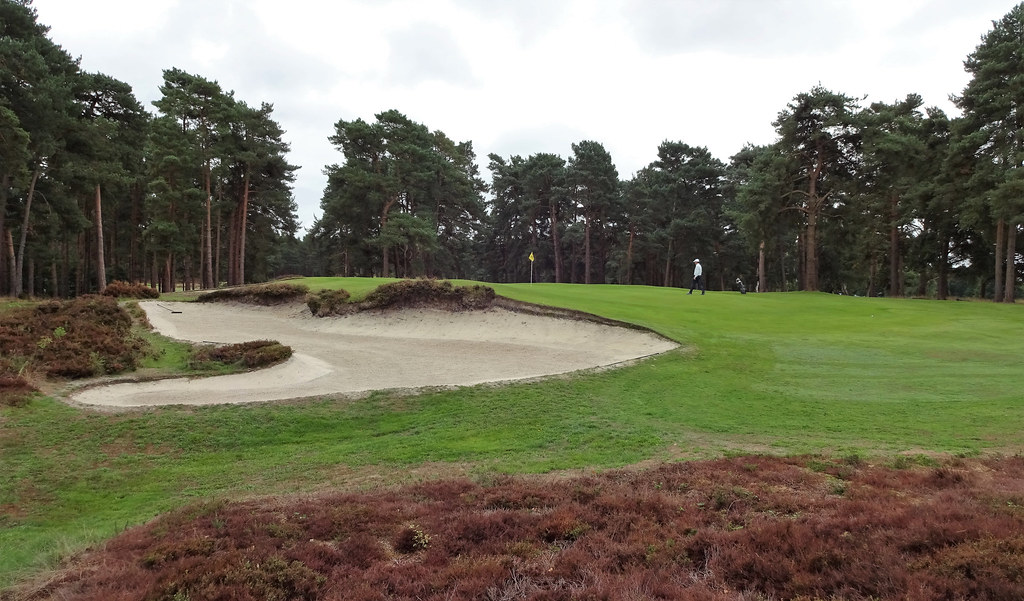
Simpson sketch of the hole. The fact that Simpson provided a sketch suggests that perhaps he had a role in the alterations made by Hallyard? Some holes certainly look like the hand of Simpson!

Next is Pulburough's most famous hole...and rightfully so. The hole orginally played as a par 4 of some 350 yards, hence the fairway out right. It would seem a very prominent founder of the club, Commander Hillyard, was responsible for the conversion of the hole from a par of 4 to 3. The club takes this fairway seriously as the blue tees ignore the position of the green and point resolutely toward the fairway. The one reservation I have is the tree. It seems to me that those wishing to take on a risk playing the hole as a two-shotter are unduly hampered by the tree.
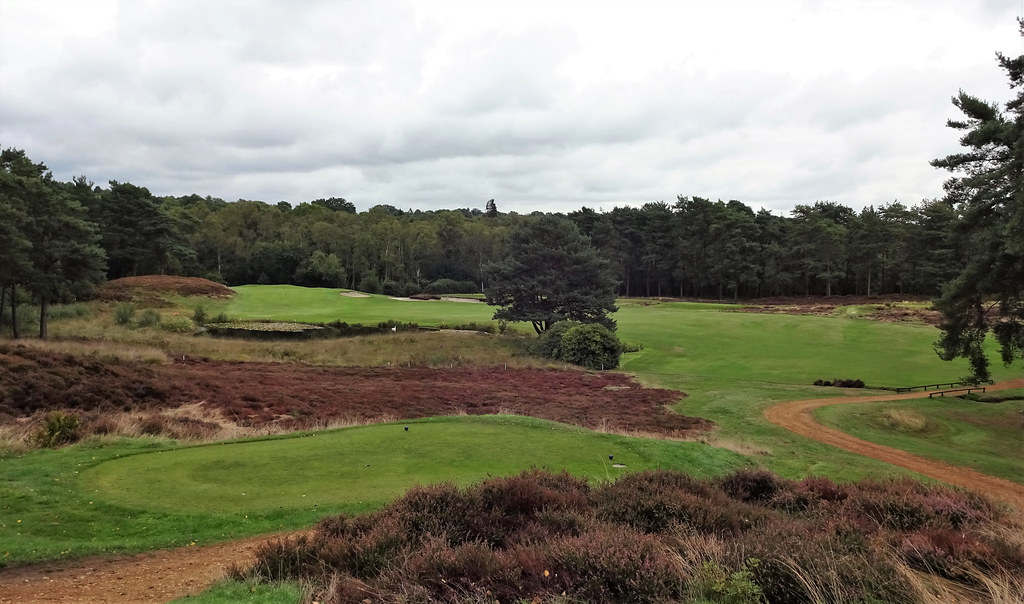
No tree!

Most golfers will ignore this sideshow and take aim at the green some 50 yards over the pond.
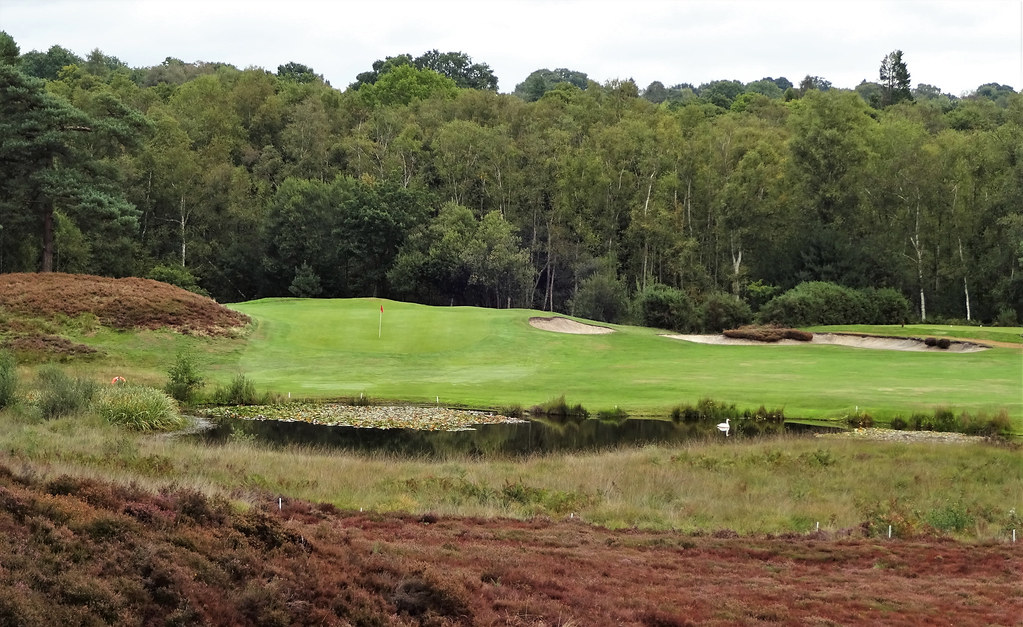
More to follow.
Ciao